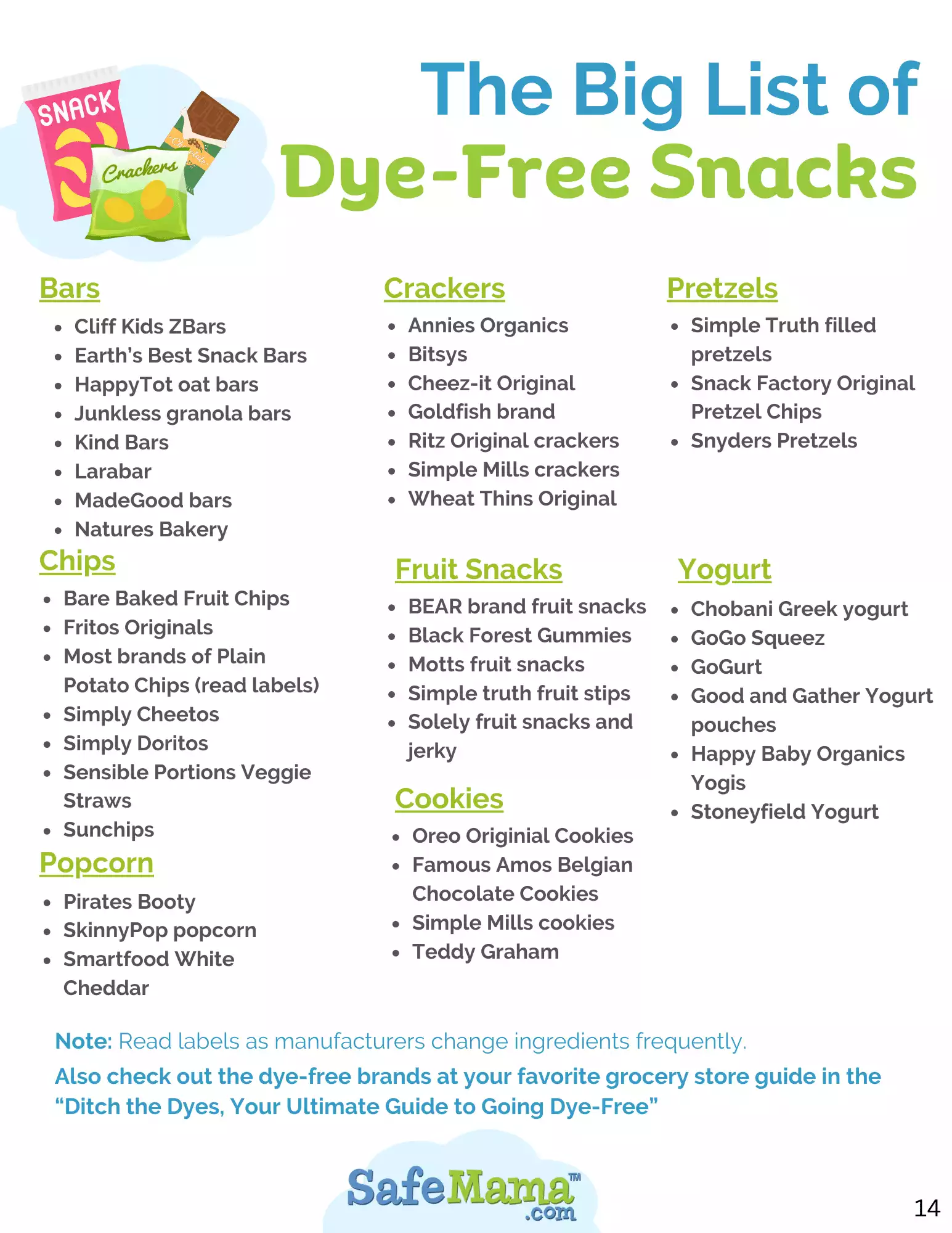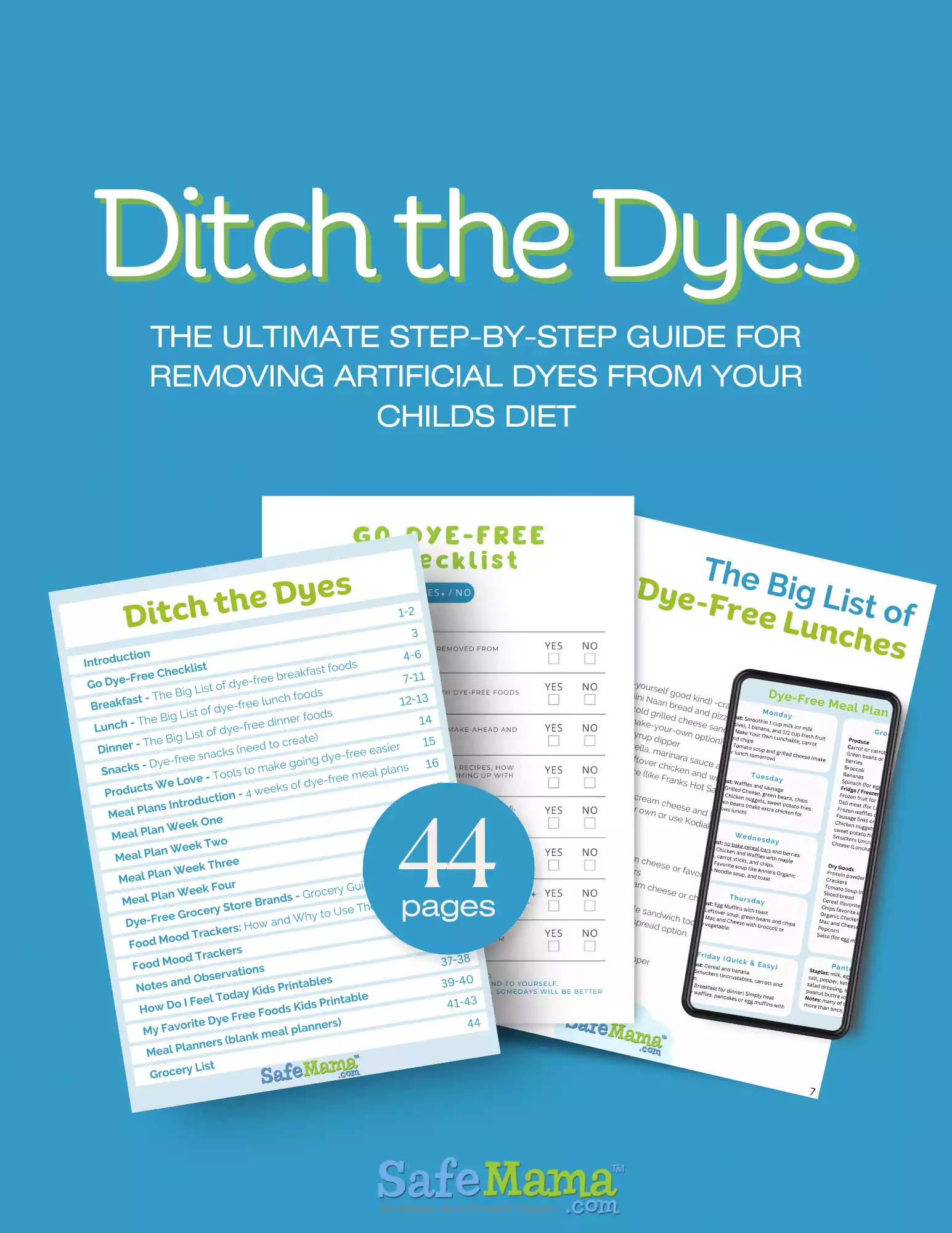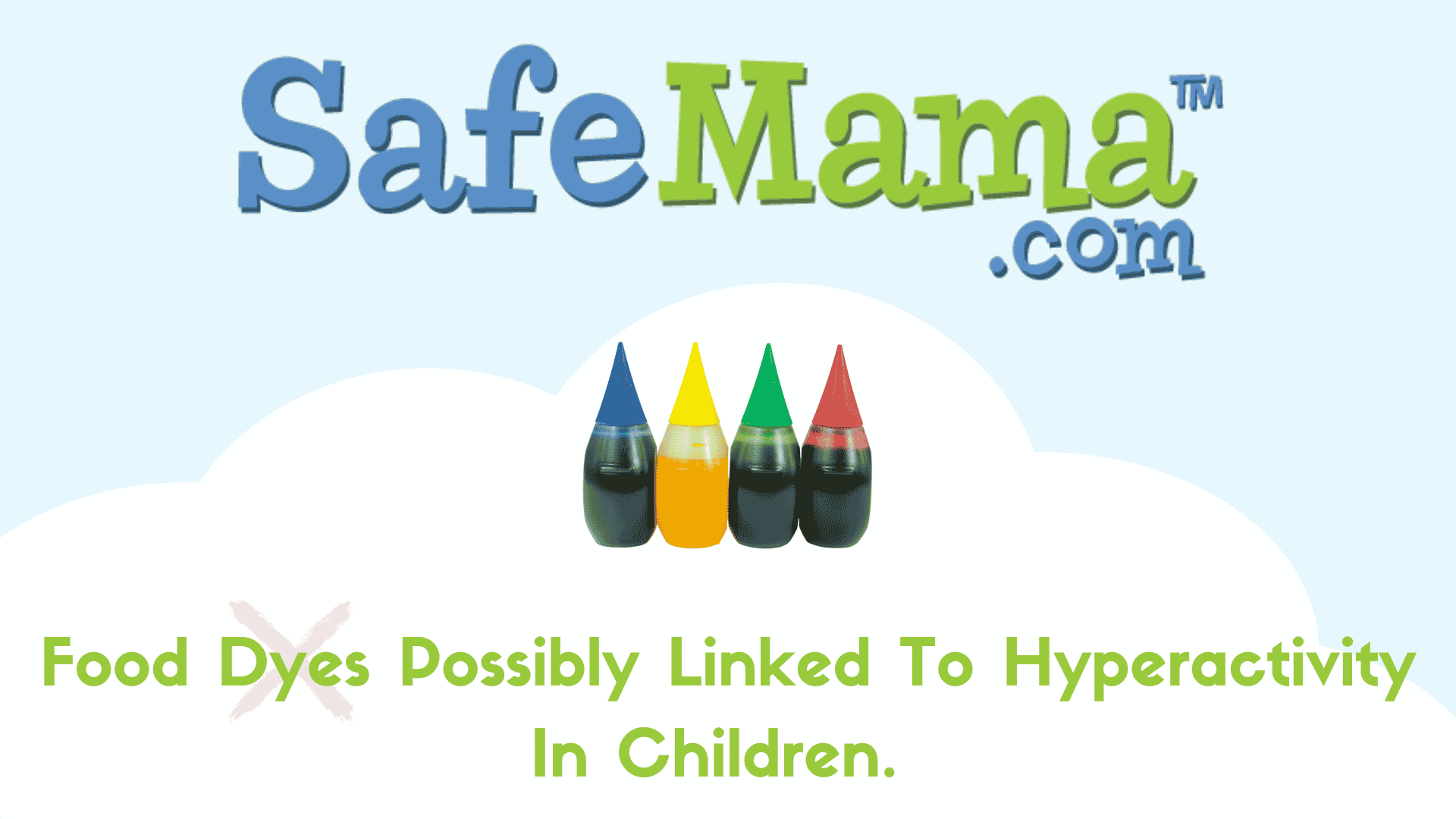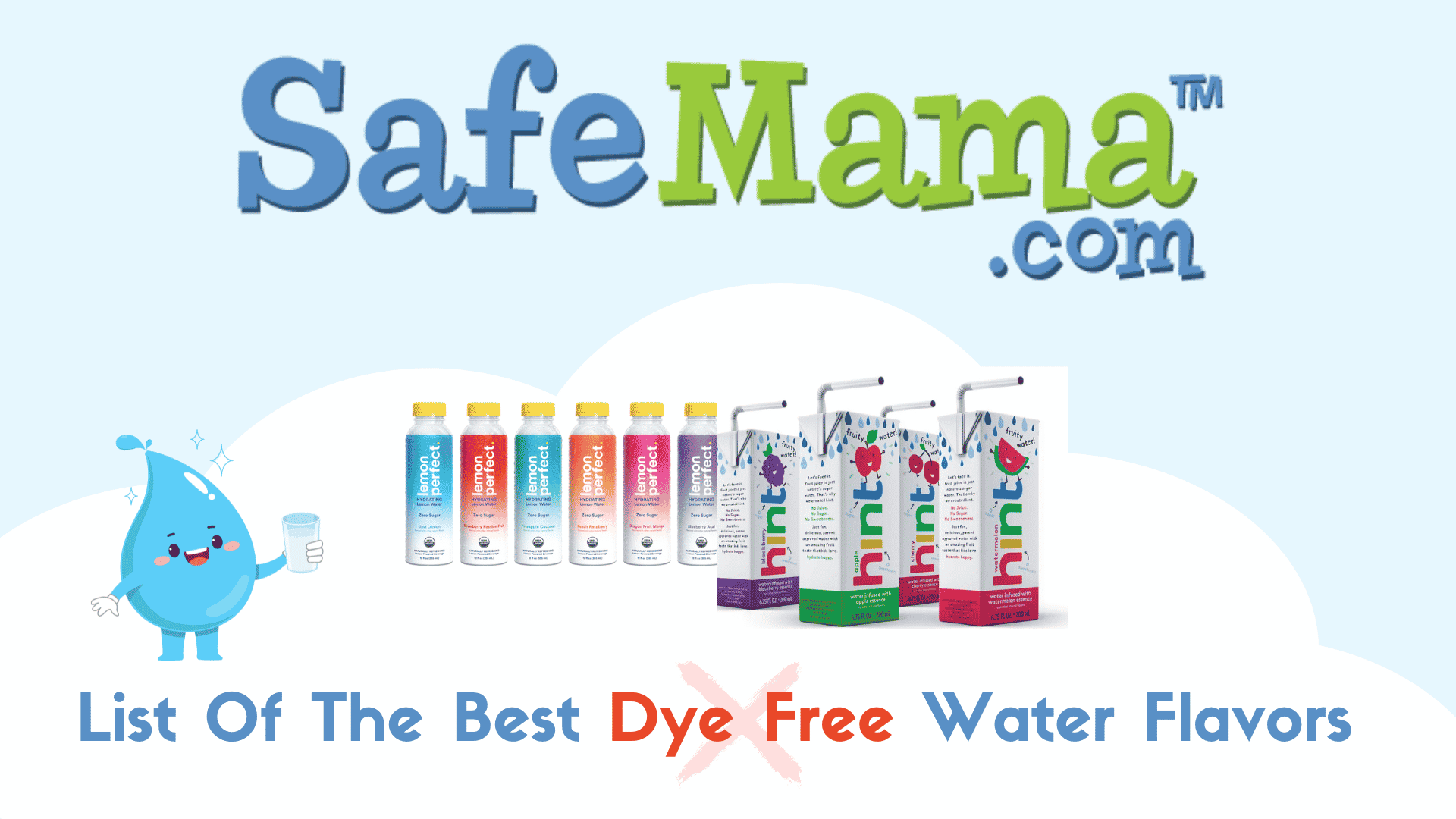Last updated on January 4th, 2024 at 11:08 pm
For decades, the American food industry has used artificial food dyes to improve the visual appeal of foods. Synthetic food dyes add visual appeal by enhancing the appearance and color of foods. While banned in most European countries for their possible links to hyperactivity, aggression, and cancer, these artificial petroleum-based food dyes have become a staple of Americans’ diets, especially children’s. Synthetic food dyes are unnecessary additives with potentially harmful side effects. The Food and Drug Administration needs to take action and remove these unnecessary additives from our foods.
What are Artificial Food Dyes (synthetic food dyes)?
According to the Center For Science In the Public Interest, synthetic food dyes are complex organic chemicals once derived from coal tar but now from petroleum. Petroleum, or crude oil, comprises ancient marine organisms extracted from the earth by giant drilling machines. Petroleum is primarily known as the primary energy source to power vehicles and is used to heat buildings. Lesser known uses of petroleum include pharmaceuticals, plastics, pesticides, and food additives, like synthetic food dye.
Why Does The United States Allow Artificial Food Dyes?
Food dyes have been used in the United States since the 1880s and, at first, could be found in products like butter and cheese. Back then, food dyes were derived from coal tar. The FDA article “Color Additives History” states, “By 1900, many foods, drugs, and cosmetics in the U.S. were artificially colored. However, not all coloring agents were harmless, and some were used to hide inferior or defective foods. A careful assessment of the chemicals used for coloring foods at the time found many blatantly poisonous materials such as lead, arsenic, and mercury being added. In many cases, the toxicities of the starting materials for synthesizing coloring agents were well known and could be toxins, irritants, sensitizers, or carcinogens.” Since then, the food industry has moved away from coal tar and used what they deemed a safer alternative, petroleum, to create food dyes in the 1950s.
Print it.
Hang it on the Fridge.
Share with Friends.
Give a Copy to the Grandparents.
A comprehensive workbook crafted to empower parents in effortlessly eliminating artificial dyes from their children's diets.
Our user-friendly guide is packed with various resources and engaging worksheets tailored for you and your little one, ensuring a seamless transition to a vibrant, dye-free lifestyle."
- 4 WEEKS of Dye-Free Meal plans, carefully constructed and with shopping lists.
- The Big List of Dye-Free Breakfasts
- The Big List of Dye-Free Lunches
- The Big List of Dye-Free Snacks
- The Big List of Dye-Free Dinners
- Your favorite grocery store brands that are dye-free
- Food Mood Journals - 2 versions
- Dye-Free Success Checklist (start here)
- Weekly Observation Notes - perfect for sharing with family members, teachers, and healthcare providers
- Kids How Do I Feel Today printables
- My favorite Dye-Free Foods quick reference sheet
- Meal Planners - 3 versions
- Grocery List Planner
Have Food Dyes Always Been A Health Concern?
Over the years, many once FDA-approved synthetic food dyes have become banned, and regulations keep changing. For example, in the 1960s, children became ill after eating specific Halloween candy that contained orange food coloring. During the same period, the government held hearings regarding the possible carcinogenicity of pesticide residues and food additives. These two events triggered the creation of the Color Additive Amendments of 1960. Defined by the FDA as “The Color Additive Amendments of 1960 defined “color additive” and required that only color additives (except coal-tar hair dyes) listed as “suitable and safe” for a given use could be used in foods, drugs, cosmetics, and medical devices.”
How Prevalent Are Food Dyes In Our Diets?
Fast forward to the present, and synthetic food dyes can be found in many food products. Currently, food dyes are not only found in those bright-colored candies or drinks found at grocery store checkouts. Synthetic food dyes also lurk in unsuspecting places in the most common foods we eat daily, for example, marshmallows, cereals, yogurts, cheese, fish, meats, barbeque sauces, jelly, and frozen foods. Food dyes can even be found in white frosting, which makes the white frosting look more opaque.
What Health Issues Are Related To Consuming Artificial Food Dyes?
Synthetic food dyes are linked to several health issues. Multiple studies have concluded that synthetic food dyes are linked to severe health effects, including hyperactivity, aggression, and cancer. A recently published study, “Artificial Food Colors and Attention-Deficit / Hyperactivity Symptoms: Conclusions To Dye For,” found in the National Library For Public Medicine, states, “Recent data suggest a small but significant deleterious effect of AFCs (artificial food dyes) on children’s behavior that is not confined to those with diagnosable ADHD. AFCs appear to be more of a public health problem than an ADHD problem. AFCs are not a major cause of ADHD per se, but seem to affect children regardless of whether or not they have ADHD, and they may have an aggregated effect on classroom climate if most children in the class suffer a small behavioral decrement with additive or synergistic effects.”
One side effect that parents are particularly interested in is hyperactivity, especially in children. One mom’s journey to help her son, who was diagnosed with ADHD, led her to examine her child’s diet. She discovered that food dyes affected her child’s ability to concentrate. Her son would even describe his symptoms to her as “brain buzzing.” The diligent mom started recording and tracking everything her child ate and developed patterns of aggression when yellow dyes were consumed and hyperactivity linked to Red Dye 40. It’s not just children who are affected by food dyes. Adults can also suffer side effects, including aggression.
Why Are We Still Using Synthetic Food Dyes In The United States?
Why are we still adding unnecessary petroleum-based food dyes to our food? The short answer is that it sells. The food industry will argue that Americans want artificial food dyes in their food and that we have become accustomed to foods looking a certain way. For instance, when picking out an orange, consumers choose the most vibrant-looking orange. But, most consumers are missing essential information to make informed decisions, like the fact that the bright-looking orange is sprayed with food dyes to make it look bright and fresh.
Color sells, and the food industry is taking advantage of adding these cheap processed dyes to sell more food. Just walk down the cereal aisle, and you’ll notice how those brightly colored cereals at perfectly placed at eye level for grade school-aged children. In fact, in the article “43% Of Products Marketed To Kids Are Artificial Dyes, Study Finds” from The Center for Science in the Public Interest, “Candies marketed to kids had the highest proportion of products with artificial dyes (96 percent) followed by fruit-flavored snacks (95 percent), drink mixes and powders (90 percent), and frozen breakfast foods (86 percent).” Targeting bright-colored foods coupled with cartoon characters or superheroes to promote the latest in cheap processed food to our children.
Why are synthetic food dyes banned in most European countries but safe in the United States? European countries believe that artificial dyes are genotoxic and can damage our DNA. Yet the same food companies sell the same products in European countries using natural food dyes and sell the same product in the United States with synthetic food dyes to save a few pennies in production costs.
How To Avoid Consuming Synthetic Food Dyes.
The best way to avoid food dyes is to read ingredient labels. Synthetic food dyes will be listed towards the bottom of the list of ingredients in packaged foods and can have several names. Some of the most common synthetic food dyes are Red 40, Yellow 5, Yellow 5, and caramel coloring. Choosing USDA organic foods, which do not allow food dyes, is another safer option. If you’re looking for ways to color food naturally, use beets, paprika, blueberries, and turmeric to achieve rich, colorful, healthy foods.
In conclusion, food dyes are unnecessary additives with potentially harmful side effects and should be banned in the United States. The food industry can easily replace these toxic food dyes with healthy natural food dyes, as they have already been demonstrated in several European countries. While using natural colors may require a shift in consumers’ take on what foods should look like, the health benefits of such a shift are well worth the effort. By banning food dyes, we can ensure the safety of consumers and send a message that we value the health and well-being of our citizens.
Further Reading:
Snacks without Red Dye 40
Works Cited
“Food Dyes: A Rainbow of Risks.” Center for Science in the Public Interest, 8 Feb. 2022, www.cspinet.org/resource/food-dyes-rainbow-risks.
“Artificial Food Colors and Attention-Deficit/Hyperactivity Symptoms: Conclusions to Dye For.” Neurotherapeutics, vol. 9, no. 3, Springer Science+Business Media, Aug. 2012, pp. 599–609, doi:10.1007/s13311-012-0133-x.
Bakthavachalu, Prabasheela, et al. “Food Color and Autism: A Meta-Analysis.” Advances in Neurobiology, Springer International Publishing, 2020, pp. 481–504, doi:10.1007/978-3-030-30402-7_15.
NutritionCenter for Food Safety and Applied. “Color Additives History.” U.S. Food And Drug Administration, Nov. 2017, www.fda.gov/industry/color-additives/color-additives-history#:~:text=Butter%20and%20cheese%20were%20the,the%20U.S.%20were%20artificially%20colored.





